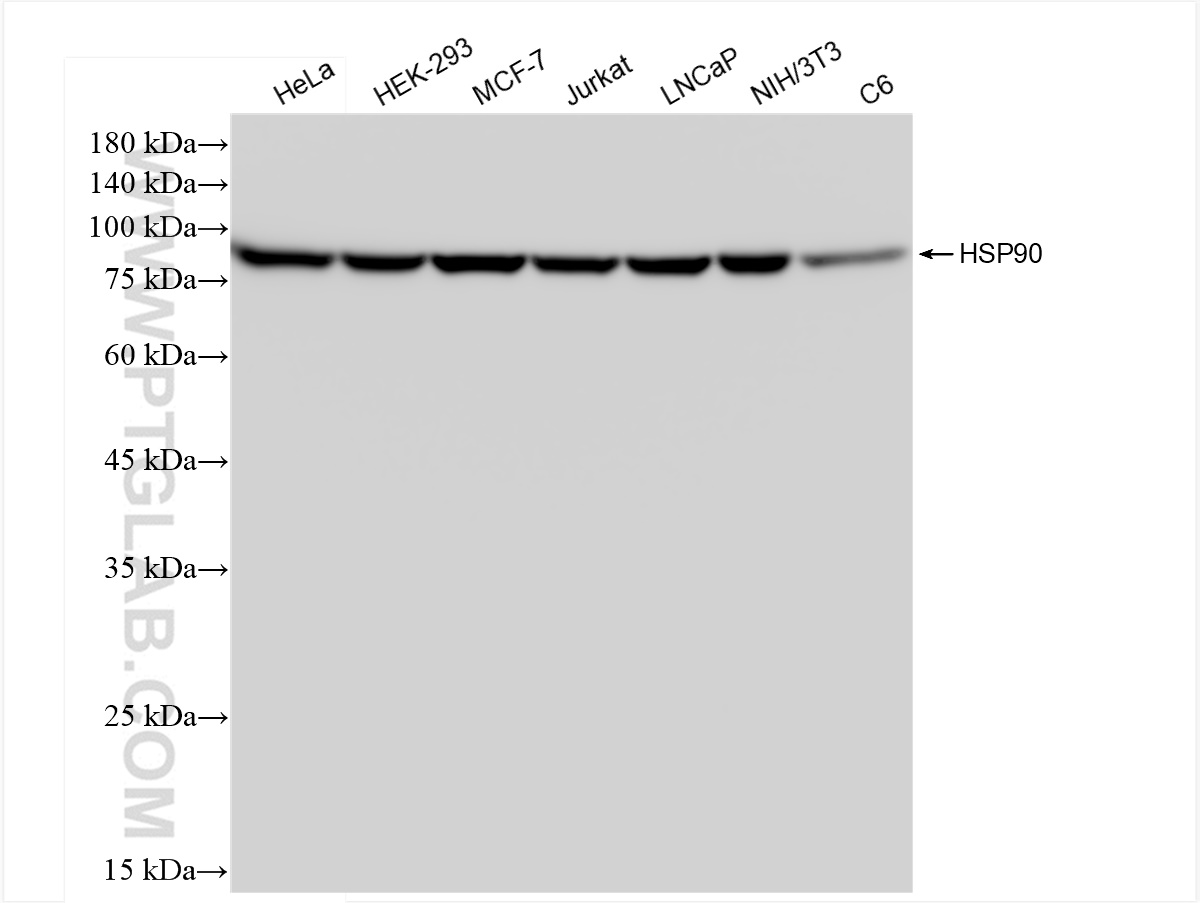验证数据展示
产品信息
83950-5-PBS targets HSP90 in WB, IF/ICC, FC (Intra), Indirect ELISA applications and shows reactivity with human, mouse, rat samples.
| Tested Applications | WB, IF/ICC, FC (Intra), Indirect ELISA Application Description |
| Tested Reactivity | human, mouse, rat |
| Immunogen | HSP90 fusion protein Ag3826 种属同源性预测 |
| Host / Isotype | Rabbit / IgG |
| Class | Recombinant |
| Type | Antibody |
| Full Name | heat shock protein 90kDa alpha (cytosolic), class A member 1 |
| Synonyms | HSP90AA1, HSP90A, Heat shock protein HSP 90-alpha, Heat shock protein HSP 90 alpha, Heat shock protein family C member 1 |
| Calculated Molecular Weight | 853 aa, 90 kDa |
| GenBank Accession Number | BC023006 |
| Gene Symbol | HSP90 |
| Gene ID (NCBI) | 3320 |
| Conjugate | Unconjugated |
| Form | Liquid |
| Purification Method | Protein A purfication |
| UNIPROT ID | P07900 |
| Storage Buffer | PBS Only |
| Storage Conditions | Store at -80°C. The product is shipped with ice packs. Upon receipt, store it immediately at -80°C |
背景介绍
HSP90, encoded by HSP90AA1, is a constitutively and ubiquitously expressed molecular chaperone that is crucial for the stability and function of many proteins. HSP90 provides chaperoning activity for client proteins; many of them are members of oncogenic pathways, indicating its implication in tumor malignancy. HSP90 mainly resides in the cytosol, while it can also be released to the extracellular space. Secreted Hsp90 is a C-terminal truncated form. It has been reported that the level of plasma Hsp90 is positively correlated with tumor malignancy in clinical cancer patients, and can be a promising diagnostic marker for tumor malignancy in clinical application.



